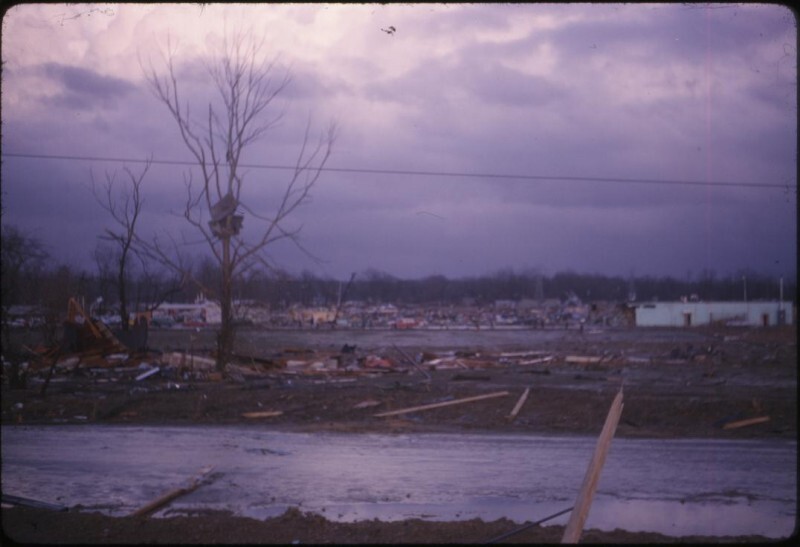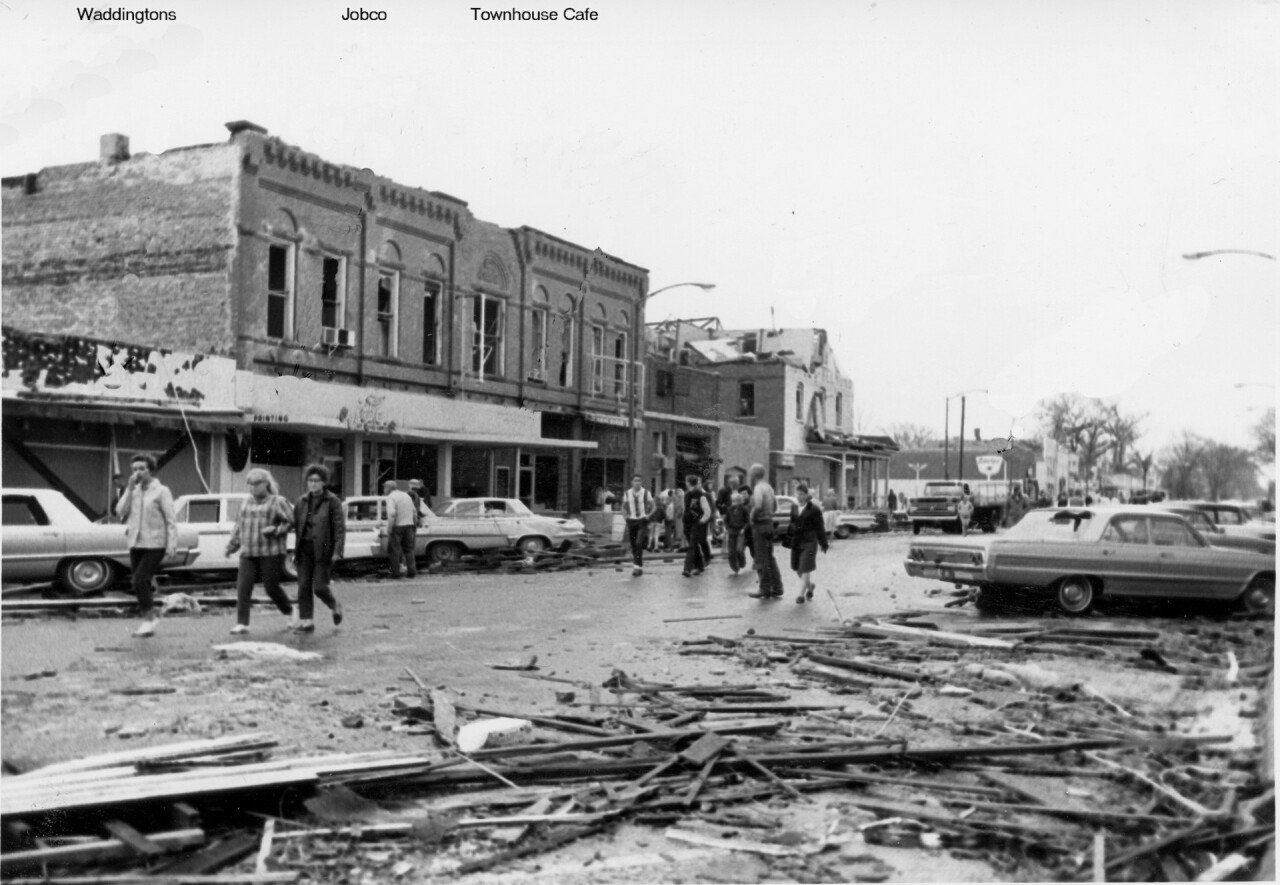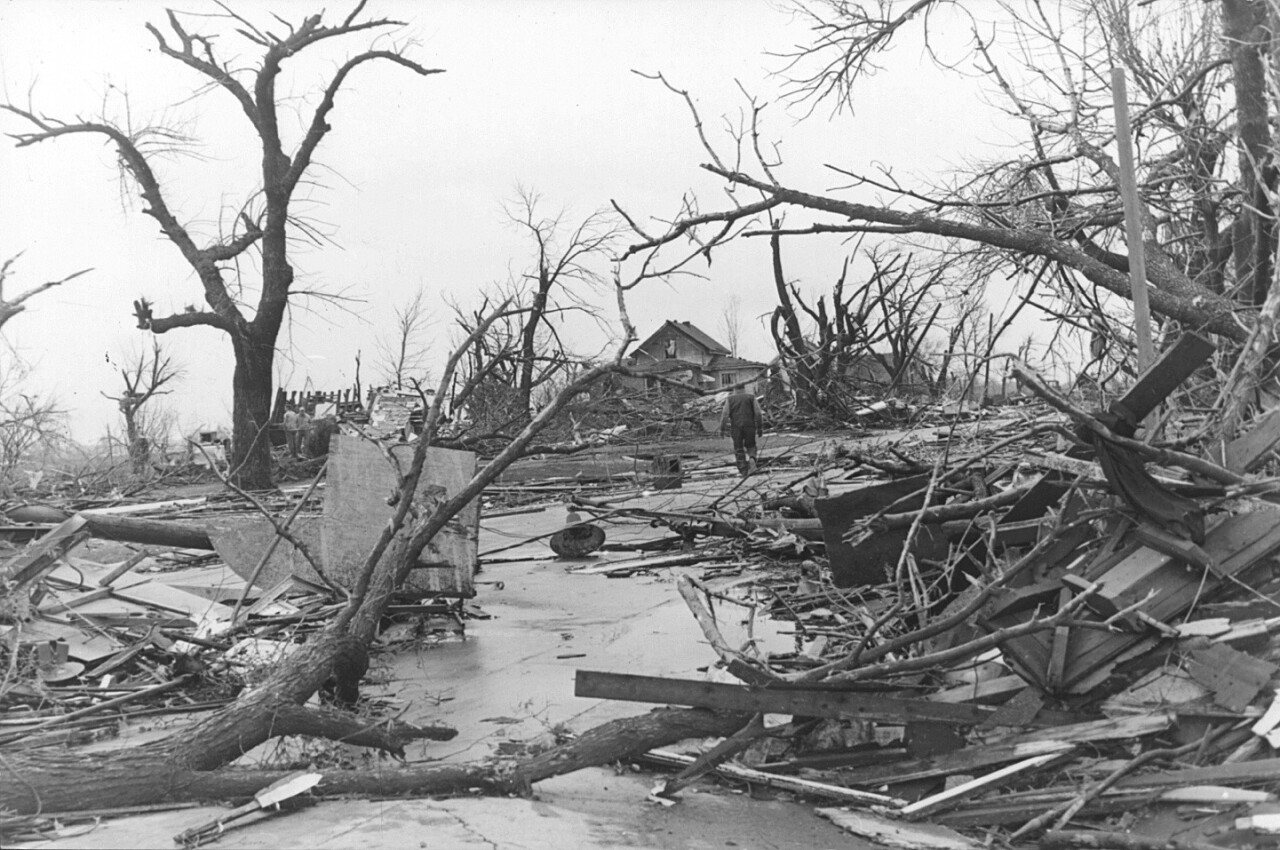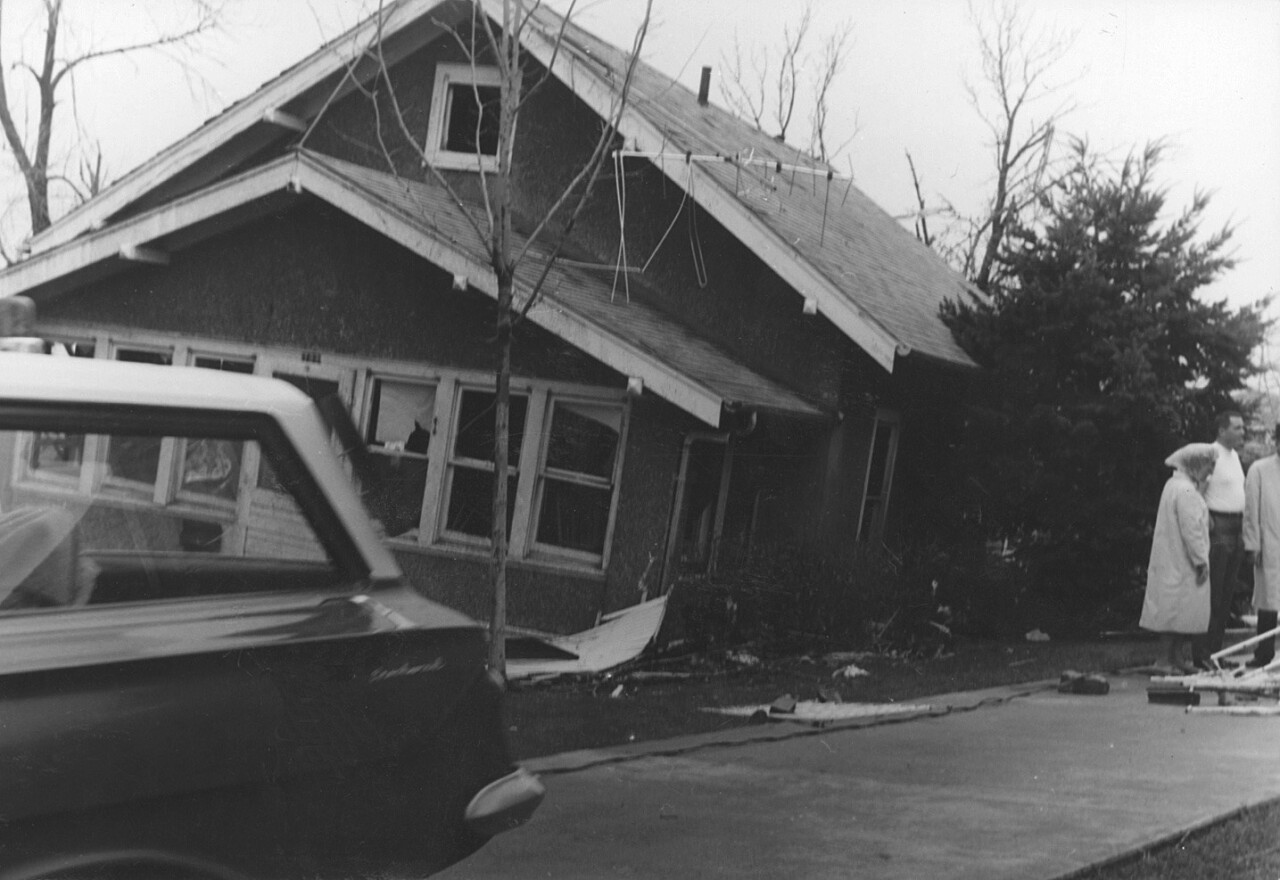Oct. 14, 1966 - Belmond, Iowa - 2 p.m. Hundreds of people lined the streets of Belmond for the town's annual homecoming parade. Belmond is a town of 2,500 in Wright County, about 85 miles due north of Des Moines. Parade-watchers cheered and clapped as floats rolled on by showing high school extra-curriculars, clubs around town, and business sponsors. By far the highlight of the parade was the Belmond Broncos football team, going on 30 straight wins, the team hasn't lost a game since 1962. That evening, the Broncos were slated to play against the Lake Mills Bulldogs, a team from a town 40 miles north of Belmond close to the Iowa/Minnesota border. The Lake Mills Bulldogs had been undefeated so far that season, so it was expected to be quite a competitive match.

Closer to 3 p.m., the parade wound down. Students from the middle and high schools had been dismissed early, now crowding in the local ice cream parlor and restaurants. The elementary school was still in session, ready to be let out within the hour. Some parents were already en route to pick up their children. Most people outside in Belmond on that mid-October day remember it felt warm, temperatures were in the 80s. There were some mean-looking clouds around, indicative of nearby thunderstorms. Close to 3, the sky suddenly got dark as a thunderstorm loomed over the town.

There was not even rain when clocks across Belmond stopped at 2:56 p.m., and within 90 seconds the town changed forever. A violent tornado ripped right through the heart of town, razing much of it to the ground. In this installment of This Week in Weather History, we look at the story behind the Belmond Homecoming tornado and the larger tornado outbreak of mid-October 1966.
THE SET-UP
The 1966 tornado season had been relatively quiet with 585 confirmed tornadoes the whole year, nearly half of the national tornado average of over 1000. However, when tornadoes did strike, they were vicious.

On March 3, 1966, one of the most violent F5 tornadoes in the 20th century ripped right through Jackson, Miss. This tornado struck a shopping center, leveling it and tossing cars in the parking lot over a half mile away. Known as the "Candlestick Park Tornado" for the shopping center, it would travel nearly 200 miles from central Mississippi into western Alabama although meteorologists disagree if it was one tornado or several. 58 people were killed in the tornadoes, with over 500 injuries. Six people died in the Candlestick Park Shopping Center.


One month later, residents in Tampa, Fla. awoke around 8:00 a.m. as an F4 tornado ripped through the northern part of the metro. This tornado continued across much of the Florida peninsula, missing Lakeland to the north, traveling just south of the Orlando metro area, and ending off the coast of Cape Canaveral. Although the tornado was not on the ground the entire time, it periodically did damage across that path. 11 people lost their lives, and over 500 were injured from the Florida tornadoes.

Finally, on June 8 a massive F5 tornado slashed a path right through Topeka, Kan. In Topeka, a myth persisted that Burnetts Mound on the southwest side of town protected the town from tornadoes. That myth was shattered as residents witnessed the huge tornado barrelling over the mound right into town. The tornado directly impacted Washburn University and moved over downtown before dissipating near the airport. 17 people were killed in Topeka, although the fatalities would likely have been more had the tornado come through 30 minutes earlier during the peak of rush hour.


After the Topeka tornado, tornado activity quieted down until mid-October. On Oct.13, a large low-pressure system was gaining stretch over northern Kansas. This low would depend further as it lifted into Nebraska on the 14th, and off into the Great Lakes on the 15th. The storm system was intense and brought a variety of hazards to the Midwest.

In Omaha, temperatures began on the morning of Oct. 14 quite warm, by noon it was 80 degrees. Then the cold front moved through, and the temperature dropped 17 degrees down to 63 degrees by 1 p.m. By the time those in Omaha were driving home for the evening, the temperatures were in the 50s. It did not rain in Omaha, but the next day there were some snow flurries in the metro leading to a trace of snow being recorded at Eppley.
Across the rest of Nebraska, a fierce blizzard raged in the western and northern parts of the state. 1.6" of snow fell in Norfolk, over 3" in Wayne, and Sioux City, Iowa picked up 4" of snowfall! As the snowstorm continued, a major tornado outbreak occurred several hundred miles to the east.
Across Iowa and Missouri, temperatures were in the 80s and unseasonably strong moisture was sitting across the region. That, combined with the ample wind shear present created a recipe for damaging thunderstorms to cross on through. Over a dozen tornadoes would move through Iowa and Missouri, with the strongest being the F-5 which hit Belmond.
THE BELMOND TORNADO

What would become the Belmond tornado touched down north of the Wright County seat of Clarion, impacting several farmsteads on the way into town. As mentioned above, the homecoming parade had just ended and the townsfolk were going about their day. In the age before Tornado Warnings, sirens screaming to take cover, or flipping on the TV to your trusted meteorologist, they had basically no warning. Seconds before the tornado hit, townspeople were running up and down the street trying to get people to take shelter.
The tornado entered the southwest part of town near the Iowa River and immediately ripped through the western side of the business district. A couple of homes just southwest of Main Street were heavily damaged, with one shifted off of its foundation. It then crossed over the intersection of Main Street and River Avenue, clipping the buildings on the west side of downtown. Many of these older brick buildings were completely destroyed, with others experiencing such significant damage they had to be torn down.


In one restaurant, 50-60 high school kids were inside after the parade getting drinks. Suddenly, the windows to the store shattered sending glass flying which cut many kids. The tornado had just grazed the building, sparing all the lives of those inside. In another store, an officer saw the tornado approach from the highway and ran into the store, holding himself down by a bolted-down chair, he survived. Cars were tossed on top of each other. In the business district, damage was done but many lives were spared.


The tornado continued past the business district into City Park, where trees were snapped and twisted. Nearby, a grocery store lost its roof, exposing the items on the store shelves to the elements. Perhaps amazingly, many of the items which included cans and other light objects, remained on the shelves untouched. Next door was a car repair shop, where cars and tires were tossed around.




The tornado continued north into the neighborhoods of Belmond. Many people were caught off-guard by the tornado, witnesses claim to have heard a loud roar before their homes gave way. In all of Belmond, 109 homes were destroyed and another 468 were damaged. As for businesses, 75 of the 112 businesses that operated in Belmond were damaged or destroyed.


Also located in these neighborhoods is the Belmond schools. The high school had been let out for the parade, but the junior high school was loading kids into buses when the tornado hit. The tornado missed the junior high building. It grazed the elementary school building, where children were crouched under desks. Part of the roof at the school collapsed, but no children were harmed.

After the neighborhoods, the tornado left the city and continued northeast over rural Wright County before lifting. The damage left behind in Belmond was immense, the damage totaled $12,000,000 ($113,000,000 in 2023) in Belmond. Officially, 172 people were injured in the Belmond tornado, some severely. Tragically, six people lost their lives in the town, five of those being older people caught off guard in their homes. One death was a man in a cement truck, tossed by the tornado.
The homecoming football game that night was canceled, but the tornado brought Belmond bad luck as the football game the following week saw the team lose its first game since 1962.
WATCH: Silent film of the damage in Belmond
Today, the Belmond Iowa tornado is rated an F-5 with wind speeds of over 260 mph by the National Weather Service. This rating was posthumous, as the Fujita scale was not created yet. The main evidence for the F-5 rating was a home that was lifted off its foundation and dropped 100 feet away. Some meteorologists dispute this rating, such as tornado expert Thomas Grazulis. Grazulis is a leading expert on pre-1950 tornadoes and is the source of many tornado ratings pre-F-scale by assigning them today. He claims the tornado was an F-4, and that the home which was lifted was weak. Despite the controversy, the Belmond tornado is officially listed as an F-5, the highest category of tornado.
THE OTHER TORNADOES OF OCTOBER 14, 1966

Although the strongest, the Belmond tornado was not the only tornado to occur on Oct. 14. A tornado outbreak occurred in Iowa into Missouri. Southwest of Des Moines in Taylor County, an F-2 tornado touched down near Lenox doing damage to three farmsteads. It was likely the tornado was not on the ground for a long time.

Another F-2 tornado moved through Ankeny, a suburb of Des Moines, causing damage to several homes and businesses. Southeast of Des Moines, an F-3 tornado was photographed as it crossed I-80 near Colfax.

Down in Missouri, multiple tornadoes touched down in the Lake of the Ozarks region, including one that disrupted homecoming celebrations in California. Later, an F-3 tornado moved through St. Charles, a suburb of St. Louis, destroying a trailer park.
In all, the Oct. 14, 1966, tornado outbreak remains one of the largest tornado outbreaks to affect the Midwest during the month.




